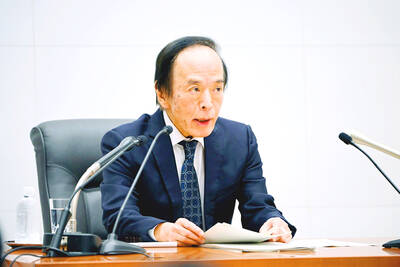The unemployment rate last month rose from the month before as expected, with more first-time jobseekers — mainly school-leavers — unable to find work, the Directorate-General of Budget, Accounting and Statistics (DGBAS) said yesterday.
The unemployment rate — a key indicator of economic performance — climbed for the second consecutive month to 4.21 percent last month, from 4.12 percent in May, the DGBAS said in its monthly report.
“The jobless rate last month showed a seasonal effect,” DGBAS Deputy Director Chen Min (陳憫) told a press conference.
Chen said the data reflected historical trends with the graduation season, and an influx of first-time jobseekers, often pushing up the unemployment rate from May to August.
The latest data showed that 477,000 people were unemployed last month, an increase of 11,000 from the previous month, with the number of first-time jobseekers failing to get a job rising by 13,000.
However, Chen said the labor market outlook in near future remained stable, as the number of workers losing their jobs through business closures or downsizing fell 22,000 in the first half.
Cheng Cheng-mount (鄭貞茂), chief economist at Citigroup in Taipei, told the Taipei Times that he expects the labor market to remain steady in the second half.
The seasonally-adjusted unemployment rate — a more accurate indicator of the long-term trend — which dropped 0.01 percentage points from a month ago to 4.24 percent, confirmed Cheng’s views.
On the working front, the number of those with jobs averaged 10.82 million in the first six months, up 1.63 percent from a year earlier, marking the lowest rise in three years, which indicated the conservative attitude of employers generating new positions, DGBAS said.
Henry Ho (何啟聖), public relations director of 1111 Job Bank (1111, 人力銀行), said in a note that a slowing supply of job openings could continue to drive up the number of first-time jobseekers failing to receive an employment offer over the next few months.
The DGBAS also unveiled the latest salary data yesterday which showed that the average national monthly salary in May was NT$37,419, up 1.83 percent from a year ago.
The average monthly salary was NT$37,262 in the January-to-May period, up 1.88 percent from a year earlier, DGBAS statistics showed.
However, when bonuses and other forms of compensation are included, the average monthly remuneration package was NT$50,050, which was a 0.71 percent markdown from a year earlier, reflecting the fact that employers were awarding lower year-end bonuses and other vocational rewards this year with the global economic slowdown impacting their business, the DGBAS said.

Taiwan Semiconductor Manufacturing Co (TSMC, 台積電) last week recorded an increase in the number of shareholders to the highest in almost eight months, despite its share price falling 3.38 percent from the previous week, Taiwan Stock Exchange data released on Saturday showed. As of Friday, TSMC had 1.88 million shareholders, the most since the week of April 25 and an increase of 31,870 from the previous week, the data showed. The number of shareholders jumped despite a drop of NT$50 (US$1.59), or 3.38 percent, in TSMC’s share price from a week earlier to NT$1,430, as investors took profits from their earlier gains

In a high-security Shenzhen laboratory, Chinese scientists have built what Washington has spent years trying to prevent: a prototype of a machine capable of producing the cutting-edge semiconductor chips that power artificial intelligence (AI), smartphones and weapons central to Western military dominance, Reuters has learned. Completed early this year and undergoing testing, the prototype fills nearly an entire factory floor. It was built by a team of former engineers from Dutch semiconductor giant ASML who reverse-engineered the company’s extreme ultraviolet lithography (EUV) machines, according to two people with knowledge of the project. EUV machines sit at the heart of a technological Cold

TAIWAN VALUE CHAIN: Foxtron is to fully own Luxgen following the transaction and it plans to launch a new electric model, the Foxtron Bria, in Taiwan next year Yulon Motor Co (裕隆汽車) yesterday said that its board of directors approved the disposal of its electric vehicle (EV) unit, Luxgen Motor Co (納智捷汽車), to Foxtron Vehicle Technologies Co (鴻華先進) for NT$787.6 million (US$24.98 million). Foxtron, a half-half joint venture between Yulon affiliate Hua-Chuang Automobile Information Technical Center Co (華創車電) and Hon Hai Precision Industry Co (鴻海精密), expects to wrap up the deal in the first quarter of next year. Foxtron would fully own Luxgen following the transaction, including five car distributing companies, outlets and all employees. The deal is subject to the approval of the Fair Trade Commission, Foxtron said. “Foxtron will be

INFLATION CONSIDERATION: The BOJ governor said that it would ‘keep making appropriate decisions’ and would adjust depending on the economy and prices The Bank of Japan (BOJ) yesterday raised its benchmark interest rate to the highest in 30 years and said more increases are in the pipeline if conditions allow, in a sign of growing conviction that it can attain the stable inflation target it has pursued for more than a decade. Bank of Japan Governor Kazuo Ueda’s policy board increased the rate by 0.2 percentage points to 0.75 percent, in a unanimous decision, the bank said in a statement. The central bank cited the rising likelihood of its economic outlook being realized. The rate change was expected by all 50 economists surveyed by Bloomberg. The